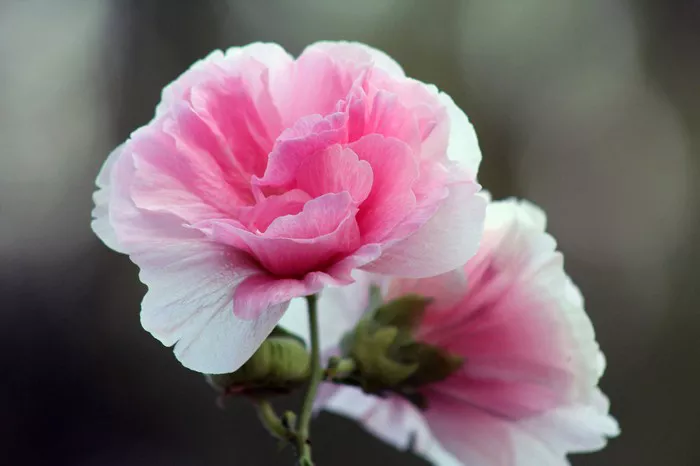Throughout history, the hibiscus flower has captivated hearts and minds with its vibrant hues and delicate petals. Revered in various cultures across the globe, this exquisite bloom holds rich symbolism and profound meaning. From its origins in ancient civilizations to its contemporary significance, the hibiscus flower continues to enchant and inspire. In this article, we delve into the depths of its symbolism, exploring the cultural, spiritual, and botanical significance of this timeless flower.
Historical Roots and Cultural Significance
The history of the hibiscus flower stretches back thousands of years, with its origins deeply intertwined with ancient civilizations. One of the earliest recorded mentions of the hibiscus dates back to ancient Egypt, where it was revered for its beauty and medicinal properties. The Egyptians used hibiscus extracts for various purposes, including perfumes and healing remedies.
In Hindu culture, the hibiscus holds special significance and is associated with several deities, particularly Goddess Kali and Lord Ganesha. It is commonly offered during prayers and rituals as a symbol of devotion and purity. Similarly, in Chinese culture, the hibiscus is celebrated for its beauty and is often depicted in art and poetry as a symbol of femininity and grace.
The hibiscus flower also plays a prominent role in Hawaiian culture, where it is known as the “pua aloalo.” In traditional Hawaiian ceremonies and celebrations, the hibiscus is used as a symbol of hospitality, love, and friendship. It is often worn as a decorative adornment or presented as a lei, conveying warmth and aloha spirit.
Symbolism and Meanings Across Cultures
Across various cultures and traditions, the hibiscus flower carries a myriad of symbolic meanings, reflecting its versatility and allure. One of the most prevalent interpretations of the hibiscus is its association with beauty and femininity. With its lush petals and vibrant colors, the hibiscus exudes an undeniable aura of elegance and charm, making it a popular motif in art, literature, and fashion.
In addition to its aesthetic appeal, the hibiscus is also imbued with deeper symbolism in many cultures. In some traditions, the hibiscus is seen as a symbol of delicate beauty and fleeting perfection, reminding us to appreciate the transient nature of life. Its short-lived blossoms serve as a poignant reminder of the ephemeral nature of existence, urging us to seize the moment and cherish each fleeting moment.
Furthermore, the hibiscus is often associated with love, passion, and romance. In ancient Greek mythology, the hibiscus was linked to Aphrodite, the goddess of love and beauty, symbolizing desire and seduction. In modern times, the hibiscus remains a popular motif in weddings and romantic celebrations, representing the deep and passionate love between partners.
Botanical Characteristics and Varieties
Beyond its cultural and symbolic significance, the hibiscus flower boasts an impressive array of botanical characteristics and varieties. Belonging to the genus Hibiscus, which comprises hundreds of species, the hibiscus is characterized by its trumpet-shaped blooms and serrated leaves. While the most commonly known species is Hibiscus rosa-sinensis, or the Chinese hibiscus, there are numerous other species and hybrids cultivated worldwide.
One of the distinguishing features of the hibiscus flower is its remarkable diversity of colors and patterns. From vibrant shades of red, pink, and orange to softer hues of white and yellow, the hibiscus offers a kaleidoscope of colors to delight the senses. Some varieties even boast intricate patterns and markings on their petals, adding to their visual appeal.
In addition to its ornamental varieties, certain species of hibiscus are also valued for their medicinal properties and culinary uses. Hibiscus sabdariffa, also known as roselle, is prized for its tart-flavored calyces, which are used to make herbal teas and beverages. Rich in antioxidants and vitamins, hibiscus tea is renowned for its health benefits, including promoting heart health and aiding digestion.
Spiritual and Healing Symbolism
In many spiritual traditions, the hibiscus flower is revered for its healing properties and sacred symbolism. In Ayurvedic medicine, an ancient system of holistic healing originating in India, hibiscus extracts are used to treat various ailments, including high blood pressure, inflammation, and hair loss. The flower is believed to possess cooling and rejuvenating qualities, making it a valuable ingredient in herbal remedies and skincare products.
Moreover, the hibiscus holds significance in the practice of yoga and meditation, where it is associated with the heart chakra, or Anahata. The heart chakra is believed to govern love, compassion, and emotional well-being, and the hibiscus is often used as a symbol to awaken and balance this energy center. Through practices such as visualization and mantra chanting, practitioners seek to harness the healing energy of the hibiscus to cultivate a deeper sense of love and connection.
Modern Interpretations and Cultural Adaptations
In today’s globalized world, the hibiscus flower continues to evolve and adapt, taking on new meanings and interpretations in different cultural contexts. In some regions, the hibiscus has been adopted as a symbol of environmental conservation and sustainability, serving as a reminder of the importance of preserving the natural world.
Furthermore, the hibiscus has found its way into popular culture, appearing in music, literature, and film as a symbol of beauty, passion, and exoticism. Its vibrant blooms and tropical allure have inspired artists and creators around the world, making it a timeless icon of allure and fascination.
Conclusion
The hibiscus flower represents far more than just a beautiful blossom; it is a symbol of cultural richness, spiritual depth, and botanical diversity. From its ancient origins to its contemporary interpretations, the hibiscus continues to inspire and enchant people of all ages and backgrounds. As we contemplate the profound meaning of this exquisite flower, let us not only admire its beauty but also reflect on the deeper truths it embodies – the transient nature of life, the power of love, and the interconnectedness of all living beings.


